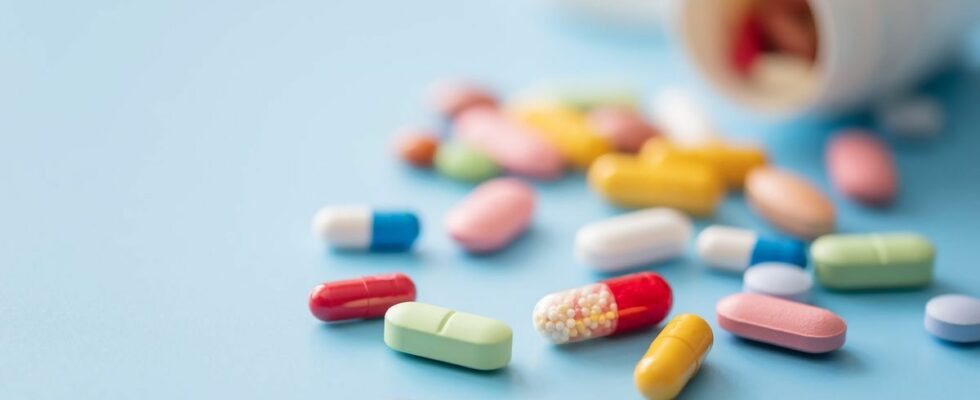Published on
updated on
Reading 2 min.
“Like mint-flavored gummies”: to make it easier for children to take medication, hospitals are starting to equip themselves with 3D printers that can personalize the flavors, shape and dosage of treatments.
Two of these machines, manufactured by the English start-up FabRx, have taken up residence in the pharmacy of the Gustave-Roussy Cancer Institute, near Paris.
Connected to a computer, they can deliver medications whose dosage and form have been pre-programmed. Installed like an ink cartridge, a syringe releases a small, rounded paste, previously heated, onto a metal plate.
Maxime Annereau, pharmacist at Gustave-Roussy, collects the medicines: “They look a bit like gummies“, these food supplements sold in the form of gummy candies.”A +Haribo teddy bear+ texture, which is chewable and whose taste of the active ingredient, combined with suitable excipients, has been masked by a mint flavor“, he adds.
This paste contains an antibiotic, prescribed to pediatric patients with cancer, “soft tissue sarcoma” – fatty tissue, muscle, blood vessels, lymphatics, nerves, etc.
The idea of personalizing medicines for children was born out of a need, explains the pharmacist: “The hospital’s pediatricians reported to us that the antibiotic, prescribed in oral form to prevent the side effects of chemotherapy, was rejected because of its very bad taste.“.
“Custom made”
“With the 3D printer, we managed to change its taste and create a more fun texture“, he says happily, hoping that these new drugs will be easier for children to take.
Currently starting up, manufacturing should accelerate at the start of the school year.
“We will be able to produce 60 antibiotics per hour, 500 doses per day.“, assures Maxime Annereau. Thanks to constantly evolving technology, he hopes to be able to work soon with “three layers of printing simultaneously“, which will allow for improvements, such as the addition of a “cola flavor, which should work even better with children“.
The interest of these printed drugs is to improve compliance, by facilitating taking. But it also lies in the possibility of adapting doses to morphology.
“It often costs the pharmaceutical industry far too much to develop pediatric forms.“, explains Maxime Annereau. With the machine, it is possible to program doses of 100, 150, 200 mg…, on demand.
According to the pharmacist, other hospitals in France are already taking these drugs.custom made“. “We will very quickly be overwhelmed by demand.“, he anticipates.
In Europe, the market is booming. The Vall d’Hebron hospital in Barcelona (Spain) was the first to launch, followed by the Leiden hospital in the Netherlands.
Pediatrics and Geriatrics
Several French establishments have already equipped themselves, or are in the process of doing so, like the Nîmes hospital center (south).
“We are still in the development phase but we hope to be able to deliver medicines for children suffering from heart disease in the first quarter of 2025.” says Ian Soulairol, hospital pharmacist.
The idea is to be able to produce “from the same ink, tablets with personalized dosage, adapted to the weight of children, which changes during these long-term treatments” he adds.
In the future, other audiences could be affected by these drugs, particularly in geriatrics.
“For elderly people who have many pathologies to treat, we can imagine superimposing several molecules within a single drug.“, says Maxime Annereau.”And for the elderly, for whom it is often difficult to swallow a tablet, other forms could be more appropriate.“, he judges.
At the Delpech pharmacy in Paris, which specializes in magistral preparation, they are testing, on a 3D printer, forms “more suited to children… and animals.”
“It is very complicated to get a cat to swallow a pill.“, notes his boss, Fabien Bruno.”But when he gets close to our slightly gelatinous beef-flavored 3D tablets, he eats them.“, he assures.
